Buenos Aires, the vibrant capital of Argentina, is a city bursting with life, culture and passion. From its elegant neighborhoods to its colorful markets and bustling nightlife, there is something for everyone in this fascinating city.
In this cosmopolitan metropolis, where tango echoes through the cobblestone streets and artistry adorns every alleyway, you’ll find yourself swept away by its undeniable charm.
Whether you’re a seasoned traveler or a digital nomad seeking new experiences, Buenos Aires offers a tapestry of delights to explore. From sipping rich, velvety Malbec in chic wine bars to immersing yourself in the sultry rhythms of the tango, the city promises an unforgettable adventure at every turn.
So, pack your bags, fuel your wanderlust, and join us as we uncover 15 amazing things to do in Buenos Aires, each one a testament to the city’s vibrant spirit and boundless allure. From iconic landmarks to hidden gems, let ExpatPathways be your guide to unlocking the secrets of this captivating destination.
Things to do in Buenos Aires
1. Tour the San Telmo neighborhood
Immerse yourself in the rich history of Buenos Aires by taking a stroll through the cobblestone streets of the picturesque neighborhood of San Telmo, located in the south of the city.
This neighborhood is one of the oldest in Buenos Aires and is home to a wealth of historic buildings and colonial architecture.
Don’t miss the famous San Telmo Fair, which takes place every Sunday in Plaza Dorrego, where you can find a variety of antiques, handicrafts and street performances of music and dance.
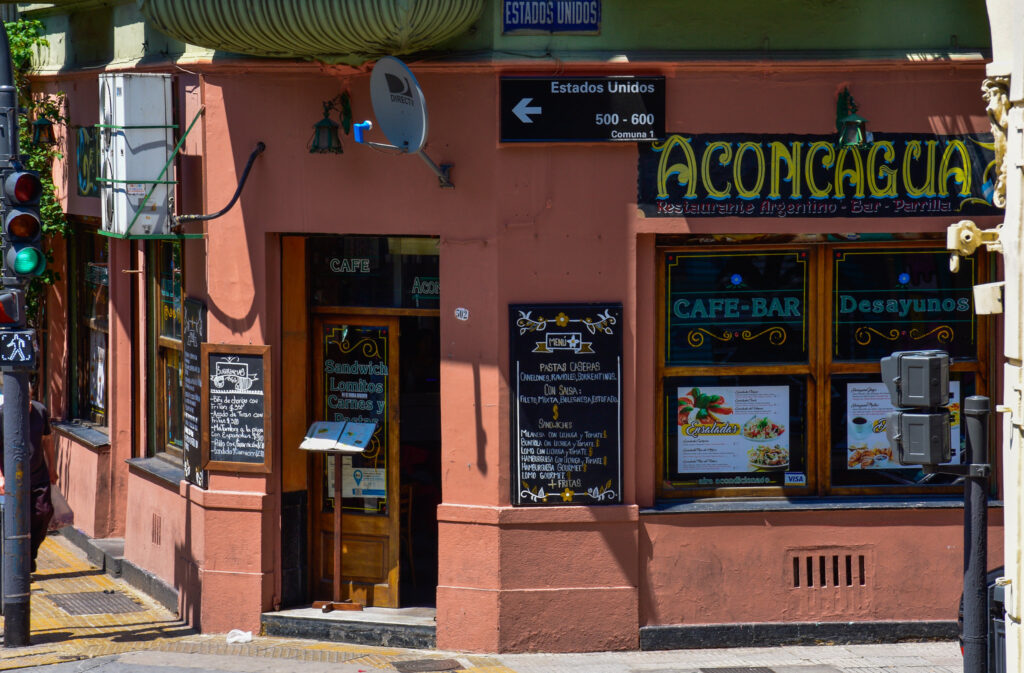
2. Enjoy a Tango Show
Tango is an intrinsic part of Argentine culture, and there is no better place to experience it than in Buenos Aires. Attend a tango show in one of the city’s famous salons, such as Café Tortoni or Esquina Carlos Gardel, where you can admire the passion and virtuosity of the dancers while enjoying a delicious dinner.
The tango originated in the poor neighborhoods of Buenos Aires at the end of the 19th century and has since become one of the most emblematic dances in the country.
We also recommend taking advantage of your stay in Buenos Aires to learn to dance tango. It’s possible? Of course! You will find hundreds of schools and clubs where you can learn to dance tango like a Buenos Aires native.
3. Visit Recoleta Cemetery
Explore one of the most famous cemeteries in the world, the Recoleta Cemetery, located in the exclusive neighborhood of the same name. This cemetery is known for its intricate mausoleums and for being the final resting place of some of the most prominent figures in Argentine history, including Eva Perón.
Take a tour of the cemetery to learn more about its history and illustrious residents, and don’t miss Evita’s tomb, which is one of the most visited in the area.
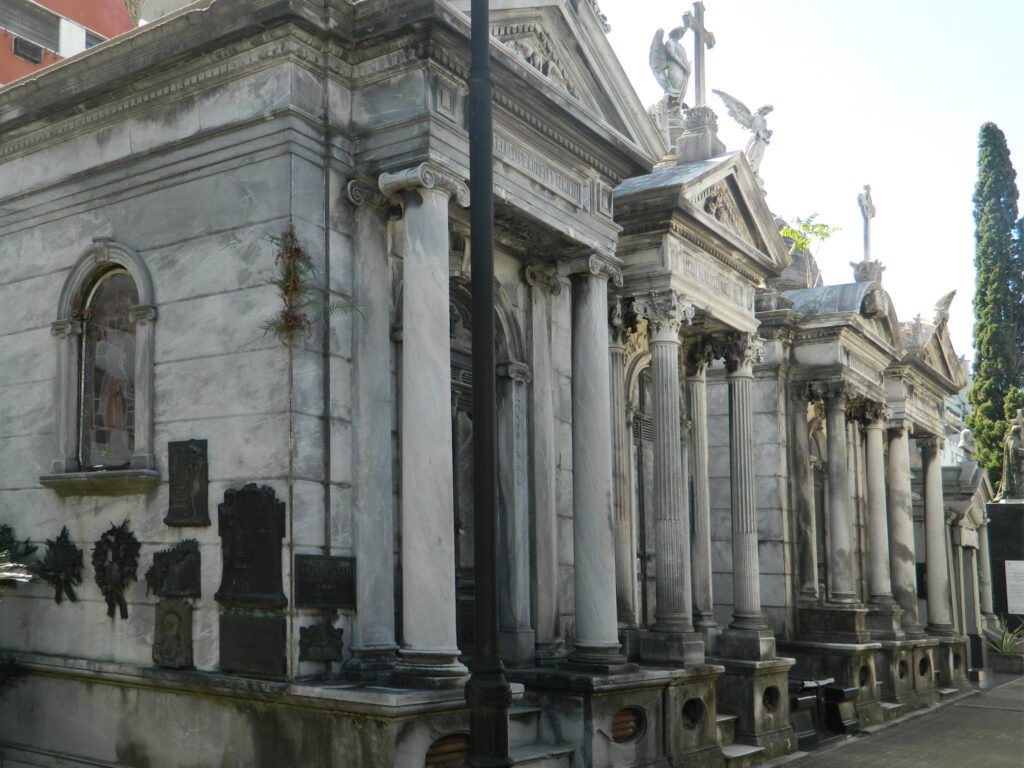
4. Taste an Argentine Asado
You can’t visit Argentina without trying an authentic Argentine asado. Head to a traditional parrilla, such as La Cabrera in the Palermo neighborhood, and enjoy juicy cuts of grilled meat, accompanied by delicious empanadas and premium Argentine wines.
The asado is a tradition rooted in Argentine culture and is considered a social event where friends and family gather to enjoy good food and company.
5. Get to know the always vibrant Corrientes Street
Corrientes Street, which is actually an avenue and one of the most important in Buenos Aires, is a tourist experience from end to end.
It is said that this street never sleeps. And that saying is largely right. Theaters, movie theaters, bookstores, restaurants and bars are offered to residents and travelers to enjoy a little of the essence of Buenos Aires.
With the Obelisk of Buenos Aires as the “sentinel” of this iconic avenue, we recommend you reserve a day of your stay in Argentina to explore this incredible avenue.

6. Visit the National Museum of Fine Arts
Immerse yourself in the world of Argentine and international art at the National Museum of Fine Arts, located on Del Libertador Avenue, in the Recoleta neighborhood.
See masterpieces by artists such as Goya, Rembrandt and Van Gogh, as well as an impressive collection of Argentine art ranging from colonial to contemporary times.
The museum has a program of temporary exhibitions and educational activities for the whole family.
7. Tour the Palermo neighborhood
Discover the bohemian charm and sophistication of Palermo, one of the largest and most diverse neighborhoods in Buenos Aires. Explore its designer boutiques, art galleries and antique stores, and relax in its many parks and gardens, such as Parque Tres de Febrero and Bosques de Palermo.
Don’t miss the Japanese Garden, an oasis of peace and tranquility in the middle of the city, where you can enjoy the beauty of the Japanese landscape and participate in cultural activities and events.
In Palermo you will also find an important gastronomic and cultural activity. Bars, clubs, restaurants and breweries await you with open arms so you can make use of your right to have fun.
8. Enjoy a typical Buenos Aires coffee in notable bars
Will you leave Buenos Aires without having tasted a delicious and aromatic coffee?
If you thought that Italy, Colombia and France were synonymous with excellent coffee, you should know that in Buenos Aires the coffee culture is as massive and popular as that of football and tango.
Both coffee and Argentine mate compete for the palates of Buenos Aires residents. Although it is worth admitting that they also complement each other very well and that is why they have become two of the most preferred infusions.
In case you didn’t know, Buenos Aires is one of the cities with the largest number of cafes in the world. Of course you can taste specialty or signature coffee, a trend that is gaining more and more ground in Buenos Aires. However, the pearl of coffee in Buenos Aires are the so-called “notable bars.”
Notable bars are cafes with many years of history in Buenos Aires. Fundamental personalities in Argentine history have passed there, from politicians and thinkers to artists and singers.
You don’t need to go to a specific place to find a notable bar. They are everywhere! We anticipate that visiting a notable café in Buenos Aires is an experience that goes beyond the coffee you are going to drink: it is also manifested in the architecture of the bars, the friendliness of the waiters and the typical atmosphere of the golden age of Buenos Aires.
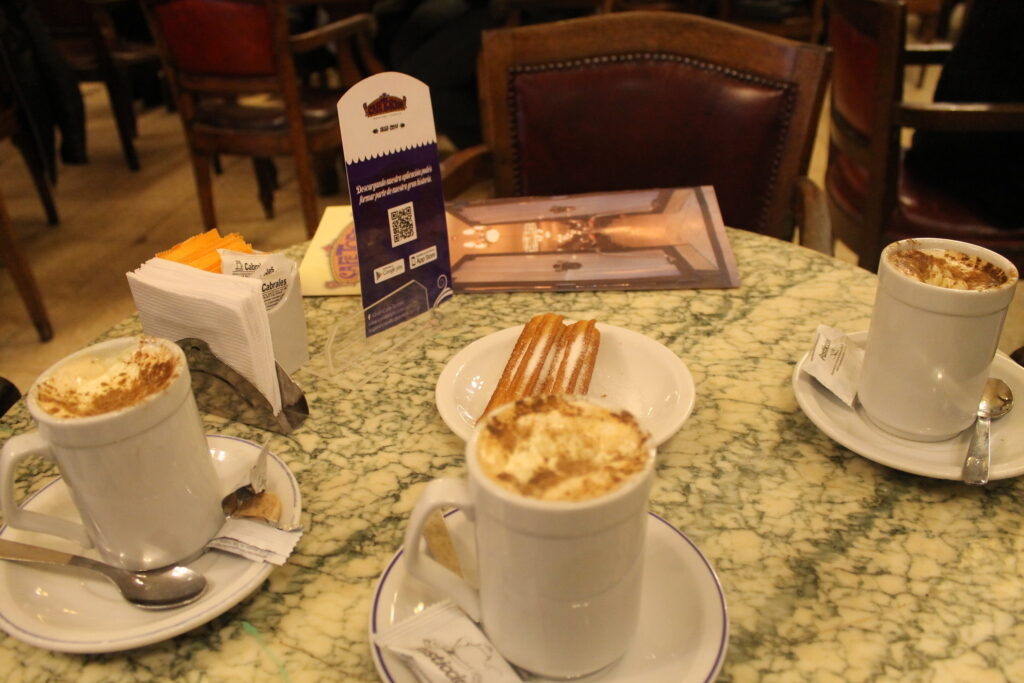
9. Visit the Colón Theater
Marvel at the architectural beauty and exceptional acoustics of the Teatro Colón, located on 9 de Julio Avenue in the San Nicolás neighborhood. Inaugurated in 1908, the Teatro Colón is one of the most important opera houses in the world and has been the stage for countless opera, ballet and concert productions throughout its history.
Take a guided tour to discover the secrets of this impressive building and attend a performance for an unforgettable cultural experience.
10. Take a postcard from the Río de la Plata
Buenos Aires is located on the banks of the Río de la Plata from the east to the north of the City.
From the La Boca neighborhood and its legendary Nicolás Avellaneda ferry bridge to the Costanera Norte, passing through Puerto Madero and the Port of Buenos Aires as a whole, here you have thousands of opportunities and places to get your best photographs of the Río de la Plata.
At the same time, touring the South and North Costanera of Buenos Aires you will be able to see different tourist attractions: buildings, museums, parks and restaurants. The advantage of the Costanera de Buenos Aires is that you can do your tour by bicycle.
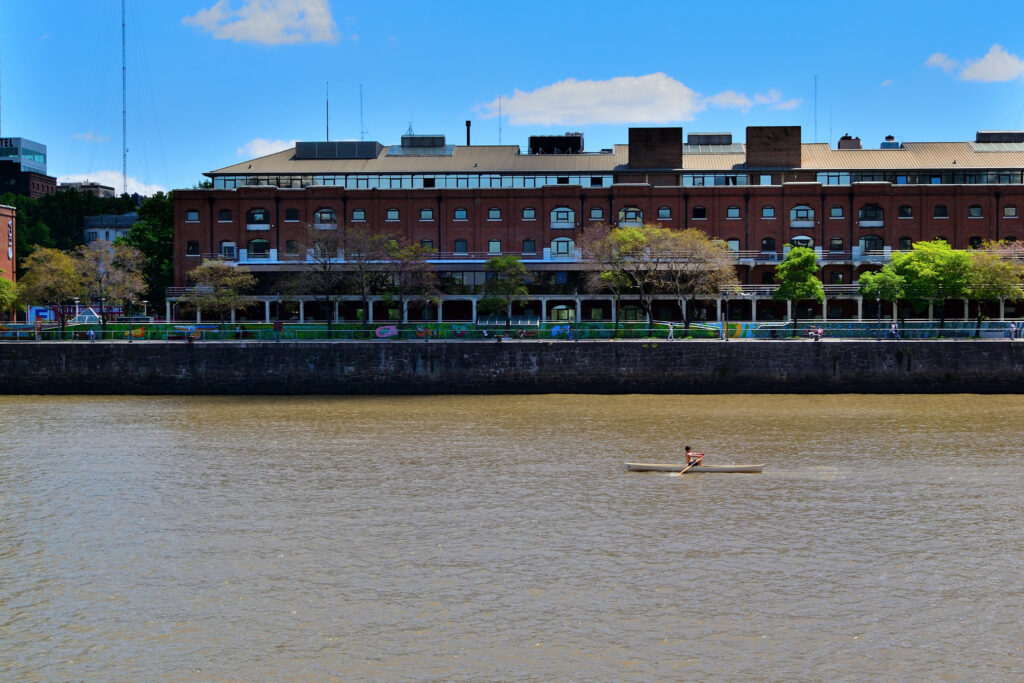
11. Visit Belgrano’s Chinatown
Explore a different side of Buenos Aires by visiting the lively Belgrano Chinatown, located in the north of the city. Immerse yourself in its multicultural atmosphere as you stroll through its streets lined with Asian stores, restaurants and markets.
Chinatown is home to a growing Chinese community in Buenos Aires and offers a variety of authentic Asian products and dishes, as well as cultural events and festivals throughout the year.
The Chinatown of Buenos Aires is a place with strong attendance by both Argentines and foreigners.
Take the opportunity to take a photo at the iconic arch that welcomes Chinatown. Also, take some time to browse the commercial stores and, why not, enjoy a delicious meal, whether oriental or whatever you want in its hundreds of restaurants.
12. Discover the Parque de la Memoria
Pay tribute to the victims of Argentina’s military dictatorship by visiting the Parque de la Memoria, located on the Costanera Norte, next to the Río de la Plata. This moving space has monuments and works of art that commemorate the disappeared and promote memory and justice.
Take a tour of the park to reflect on this dark period of Argentine history and to honor those who lost their lives fighting for democracy and human rights.
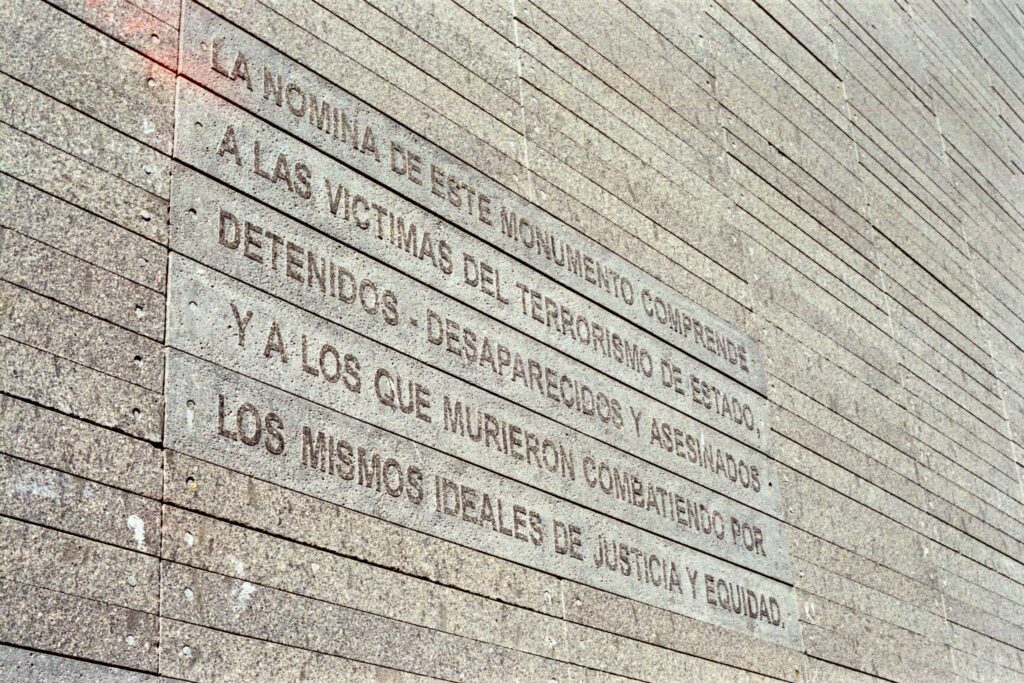
13. Explore the Museum of Latin American Art of Buenos Aires (MALBA)
Immerse yourself in contemporary Latin American art at MALBA, located on Figueroa Alcorta Avenue in the Palermo neighborhood. The museum houses an impressive collection of works by artists such as Frida Kahlo, Diego Rivera and Fernando Botero, as well as temporary exhibitions of contemporary artists from throughout the region.
Explore the museum’s galleries to discover the cultural and artistic diversity of Latin America and participate in educational activities and special events.
14. Tour the Retiro Neighborhood and Plaza San Martin
Stroll through the elegant Retiro neighborhood and visit Plaza San Martin, an oasis of tranquility in the heart of the city. Contemplate the majesty of its monuments, such as the Monumento a los Caídos en Malvinas and the Torre de los Ingleses, and relax in its beautiful gardens as you immerse yourself in the history of Buenos Aires.
Plaza San Martin is a popular place to enjoy outdoor activities such as picnics, bike rides, and cultural and musical events.
15. Visit the most beautiful gardens and parks in Buenos Aires
Buenos Aires has to offer you the most beautiful parks, gardens and squares in the region.
Parks are the largest green spaces due to their size and you can find them in the neighborhoods of Palermo, Caballito, Recoleta, Belgrano, Núñez and Parque Chacabuco.
On the other hand, the gardens are more intimate and isolated environments, such as the Botanical Garden and the Japanese Garden, where you can see different species of flora and fauna up close.
In turn, each neighborhood of Buenos Aires has its own squares, which have dimensions equivalent to those of an urban block.
Of course, each green space offers more or less activities to do. However, we assure you that all of them are different and have their own identity that you should know.
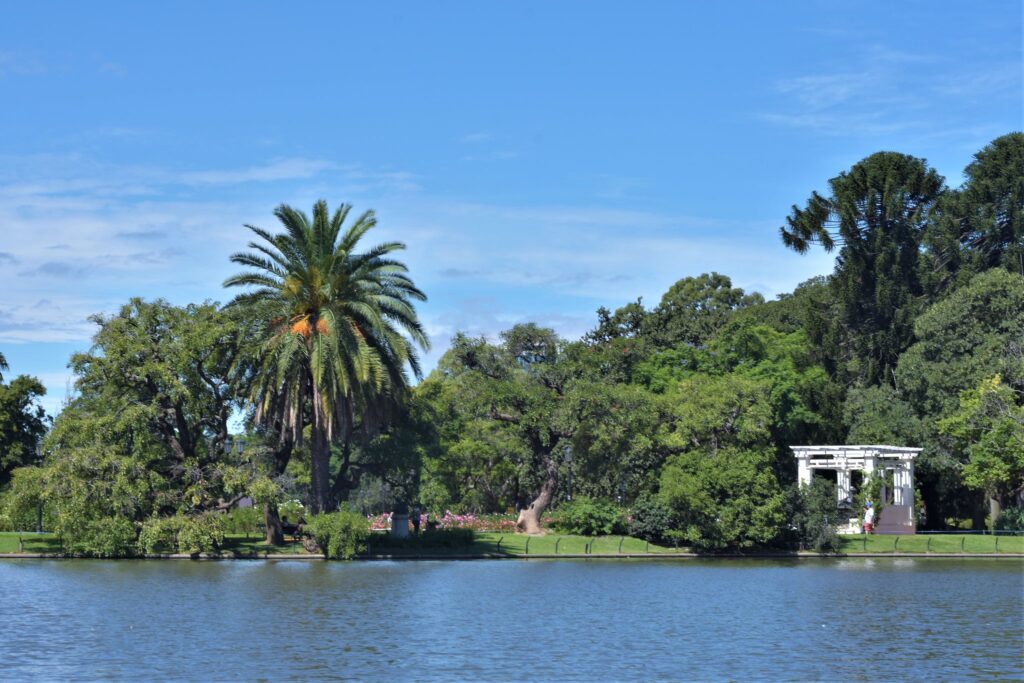
16. Visit La Boca & Caminito
This area of the City of Buenos Aires is as picturesque as it is historical. No expat, traveler or digital nomad who resides or is in Buenos Aires can miss the experience of walking through the streets of La Boca, and especially along the emblematic Caminito promenade.
One of the first areas of the City of Buenos Aires to be massively inhabited by immigrants arriving in the country. After the wave of fever and illnesses resulting from precarious living conditions, at the beginning of the 20th century and the end of the 19th century, La Boca became a postcard of Buenos Aires history.
However, the past and the present come together to offer you a great neighborhood to visit. Tango, delicious foods, the Nicolas Avellaneda Ferry Bridge, the Riachuelo, Caminito and, of course, the unmissable and mythical Bombonera.
17. Try Argentine mate and become a fan of this infusion
More and more foreigners incorporate Argentine mate as part of their daily infusions. Behind the coffee empire, Argentine mate has been gaining followers among travelers, digital nomads and expats who find in this ancient drink a delicious flavor and a natural dose of energy.
Argentine mate is an infusion typical of the River Plate and Guaraní area of Buenos Aires. For its preparation, yerba mate grown, for example, in the area of Argentine Mesopotamia and the coast, hot water and a glass or container known as mate is used.
A cultural and popular ritual has been built around mate. Surely you have seen or will see, if you plan to travel to Buenos Aires, not only a mathematical relationship of “1 mate for every 2 people”, but also groups of friends and couples who share a round of mate.
You can’t leave Buenos Aires without, at least, giving Argentine mate the opportunity to win your heart. You will not regret!

18. Immerse yourself in Argentine football and its aura in the land of Messi and Maradona
When you step onto Argentine soil, remember something very important: you will be in the land where the two best soccer players in world history were born.
Although Lionel Messi was born and raised in Rosario, both he and Maradona and a long list of soccer heroes make up the pantheon of Argentine soccer icons. Yes, the same one who has managed to win 3 world championships in 1978, 1986 and 2022.
Visiting Argentina, and in particular Buenos Aires, is a trip to the cradle of world football (along with Brazil). In our country we breathe football in every minute of our lives.
It is very correctly said that “all Argentines are soccer coaches.” And is not for less. In every bar, street corner, restaurant or social gathering, football is a priority topic of conversation. Likewise, it is the only sport that has managed to establish itself as a relevant topic on the agenda of interests of all Argentines.
When you visit our country and Buenos Aires, you can immerse yourself in that microclimate of passion for football that we are describing to you. As? In many ways: watch a football match, visit the most iconic stadiums (Boca Juniors and River Plate, for example), tour the football club museums and, why not, buy a football shirt to take with you as a souvenir.
19. Enjoy the cultural and artistic scene in Buenos Aires
Although tango is the main attraction of Argentine music, the truth is that Buenos Aires and Argentina is one of the most important meccas in terms of art and culture, both global and regional.
Argentina has fantastic musicians and singers, from rock figures such as Gustavo Cerati and Jorge Solari to more modern music stars such as Maria Becerra, Tini Stoessel and the new artists of the trap genre.
Argentine music invites you as a traveler visiting Buenos Aires not only to enjoy live recitals and street artists, but also to visit record stores and listen to the best of national music.
On the other hand, Argentine theater has been an exponent of national art for many decades. If you walk along Corrientes Street, but also along other arteries in the center of Buenos Aires, you can enjoy theatrical works of everything you can imagine. For an inhabitant of Buenos Aires, going to the theater is a healthy habit.
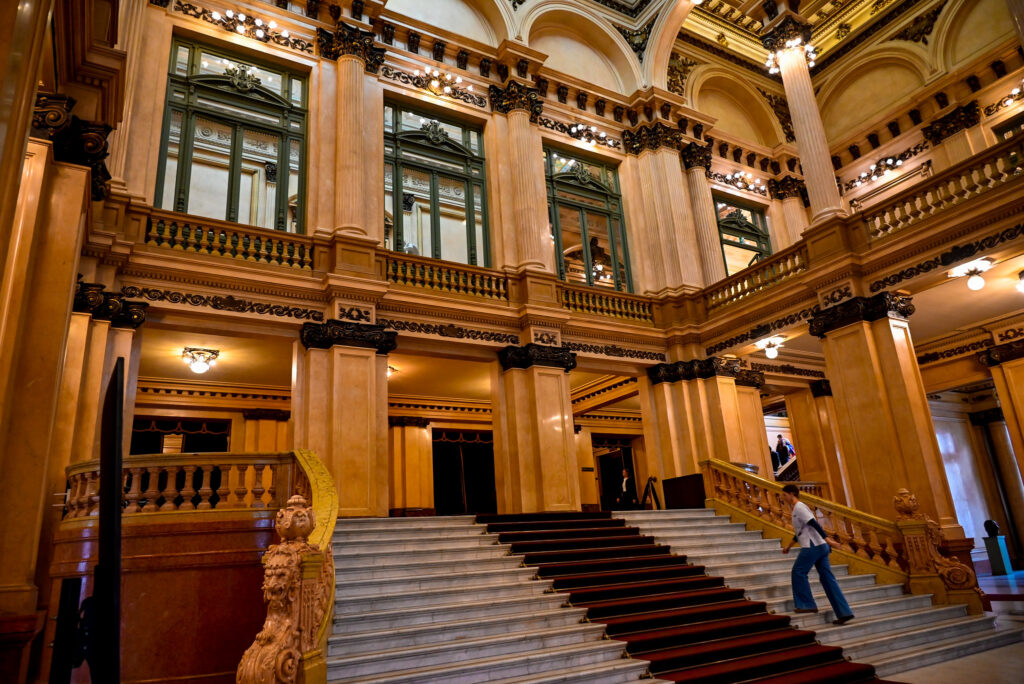
20. Tour Buenos Aires to the last of its corners
We tell you literally: Buenos Aires is a city with an infinite number of activities and things to see or do. Of course it is difficult to put together a plan to enjoy all that. However, good planning of your sightseeing tours is key to capturing every last molecule of the essence of Buenos Aires.
Just as we recommend planning, we also advise leaving room for surprise. On your walks through Buenos Aires it is very likely that you will find hidden gems: buildings, monuments, parks, streets, restaurants, bars and much more. And this is precisely where the magic of Buenos Aires lies: what one traveler doesn’t find, another may find.
Therefore, in addition to being a traveler or a digital nomad who will live in Buenos Aires for a certain time (or forever, if you wish), you must assume the role of an urban explorer. This way you can discover all the secrets that a city like Buenos Aires has to reveal.
(Featured Image Source: Sebastian Cyrman/unsplash.com)


